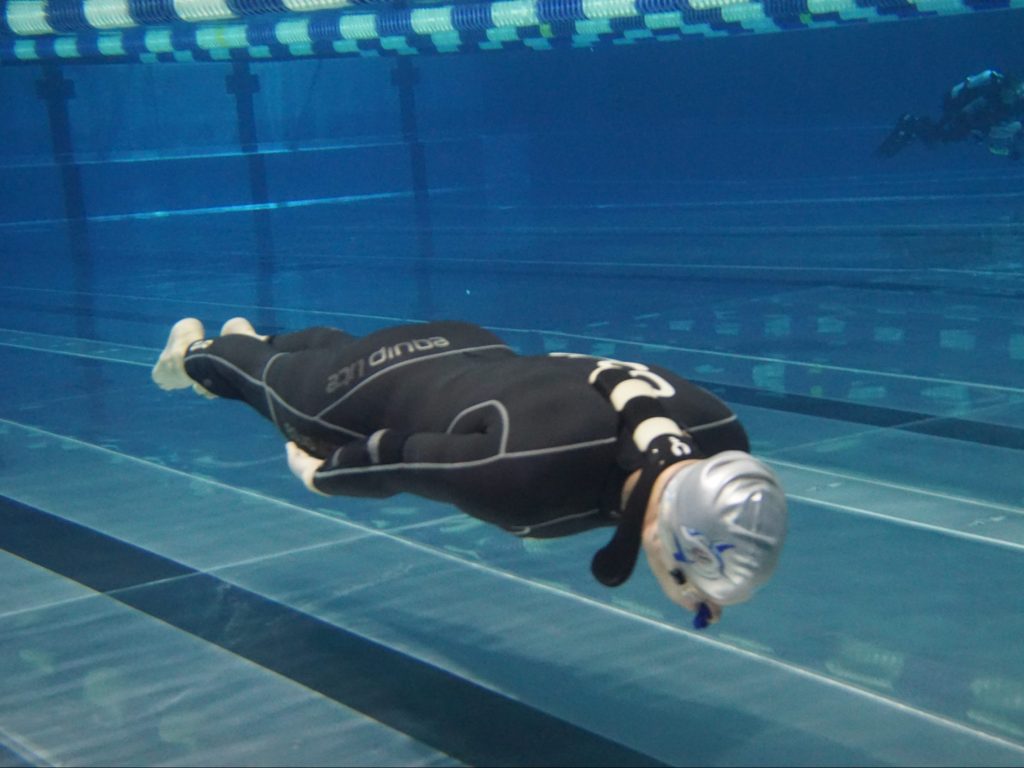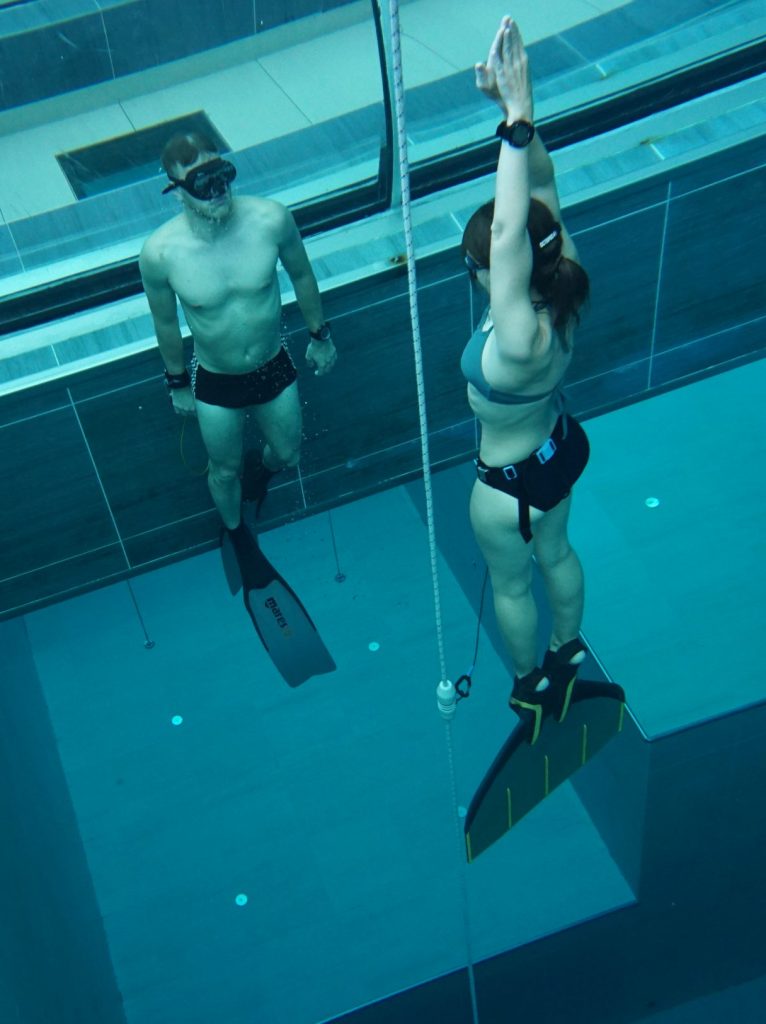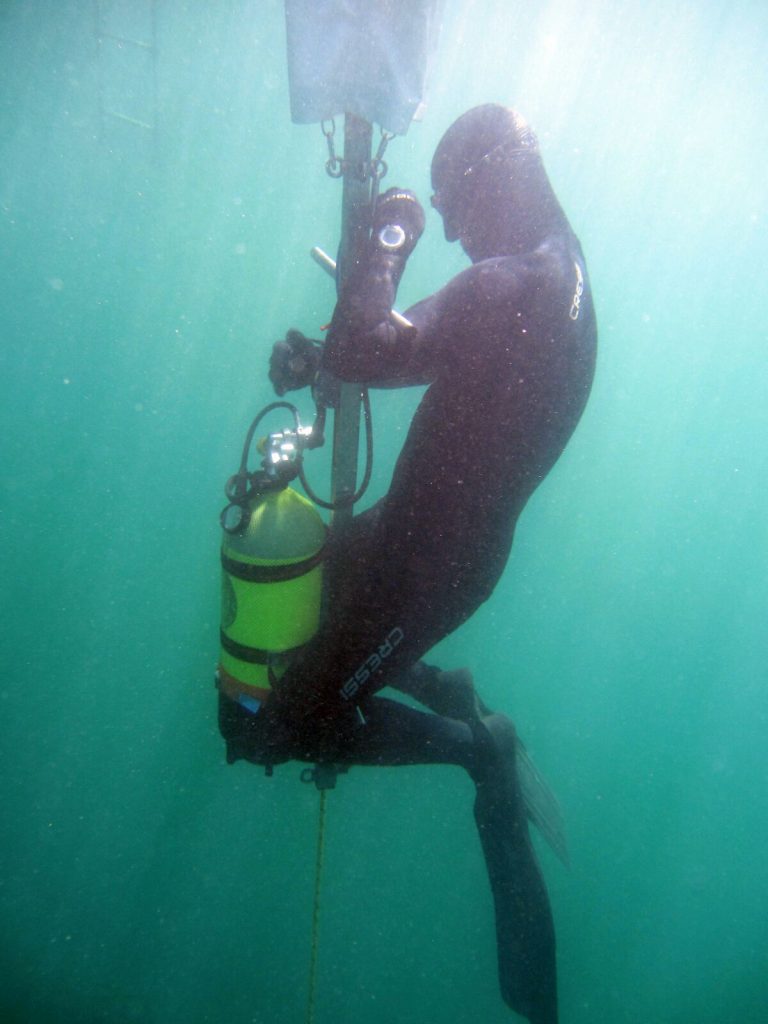For some freediving means “just” to explore the underwater world on breathhold. This is absolutely fine, having fun must not be neglected! Those who want to go a step further and maybe want to take part in competitions will come across the different disciplines sooner or later. They are broadly divided into pool and open water and there are certain rules to follow.
Pool
Due to the lack of depth in most pools these disciplines focus on horizontal distance. Furthermore there is Static.
STA – Static
In Static the goal is to hold ones breath as long as possible. The athlete floats face-down in the water and only moves a finger to give the signal that everything is ok. Static is much more exhausting than it sounds, especially mentally. You have to cope with your own thoughts for some minutes and try to push them into a positive direction even when it gets stressful. The good thing about Static is, that particularly newcomers make great progress at the beginning and you can really learn how to relax. Static is mostly done with neoprene suits in a baby pool because you cool down quite fast.
DYN – Dynamic
Here the athlete tries to dive as far as possible on a single breath. There is a distinction between the different methods of movement:
– DNF – Dynamic no Fins
– DYN – Dynamic (with monofin)
– DYNB – Dynamic Bi-Fins
Endurance, Speed Apnea
In competitions that last only for one or two days endurance and speed apnea disciplines are rarely found. The task is to repeatedly dive 50m as fast as possible (2×50, 8×50 or 16×50). The complete time is measured, the breaks between the lengths can be as long as the diver wishes. In Speed Apnea (2×50) the most experienced ones waive the break and do the 100m on one breath.
Sea or Lake – Depth
Deep diving can be done in lakes or in the sea. Greater depths are reached in the sea because it is warmer and does not get dark so quickly. The dives are performed on a line which is attached to a buoy or, even better, on a counterweight system. The diver is attached to the line with a lanyard.
Tieftauchen mit konstantem Gewicht
Constant weight means, that you have to bring the same weight up as you took down. Similar as for the pool disciplines there is a distinction between:
– CNF – Constant Weight no Fins
– CWT Constant Weight (with monofin)
– CWTB Constant Weight Bi-Fins
– FIM (Free Immersion) – no fins, athlete moves forward by pulling on the line
Jump Blue
In a depth of ten meters the athlete has to dive with bi-fins or monofin around a square with a side length of 15m as far as possible. Jump Blue is a mix of deep diving and distance diving but it can only take place in open water.
Variable Weight (VWT)
The diver is being pulled down by a guided weight and has to swim back to the surface by him/herself. The weight stays down. The original form is called Scandalopetra and comes from Greece. Sponge divers used a rock attached on a rope to dive down and were pulled back by a colleague.
No Limits (NLT)
No Limits is not a competitive dicsipline. The diver is pulled down by a system called sledge which shall also take him/her back to the surface. This is done with a bag which is filled with air from a compressed air bottle. In this way the deepest dives where done but it is quite riskful. We have a sledge system in our association but we use it for fun and not for records.





